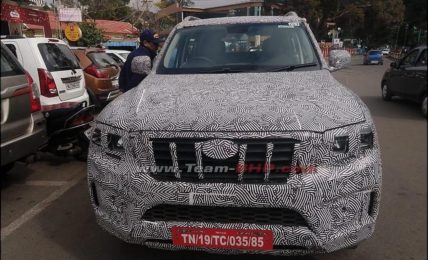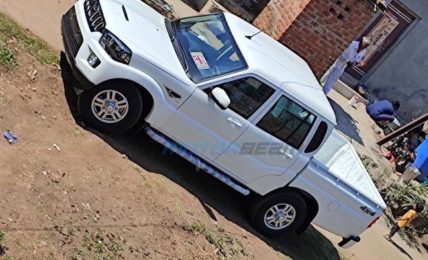The higher output from the engine makes the Scorpio eager to drive
Performance – The Mahindra Scorpio continues to come powered by the same 2.2-litre mHawk diesel engine but this time around, it produces 140 PS of power at 3750 RPM and 320 Nm of torque at 1500 RPM which is a very significant increase. Also, the engine is now mated to a 6-speed manual transmission and it also gets a Borg Warner turbocharger. With this, the new Scorpio feels pleasantly good to drive and low-end punch has increased drastically. Even the mid-range has an extremely good surge and hence the SUV feels much more livelier than before. During our VBOX tests, I got a 0-100 km/hr time of 12.59 seconds which is more than a second quicker than the older vehicle, while 100 km/hr comes up in 3rd gear at a notch below 4500 RPM.
Driveability on the highways has improved significantly with this new tune
With improved power and torque, the Scorpio packs a punch like never figure
NVH levels aren’t the best though and a lot of vibrations filter inside the cabin. At high speeds, you also get a lot of wind noise from the area near the A-pillar. The 6-speed transmission has good ratios and this makes the Scorpio eager in its performance but slotting into reverse gear is very difficult and takes a couple of attempts. Fuel efficiency is approximately 10-11 km/l in the city and around 13-14 km/l on the highways. Needless to say, the improved performance on the Scorpio has added a lot of life to the car and it feels so much better.
The Scorpio has always been known for its bouncy ride
Driving Dynamics – The suspension on the Mahindra Scorpio has always offered a very bouncy ride and this one is no different. Compared to the previous car, I felt a marginal improvement in the ride quality. However, Mahindra has a long way to go before they can match the comfort of the Tata Safari Storme. The stiff suspension set up on the Scorpio makes it a decent handler but there is a lot of body roll. The steering, though, offers very good feedback. Braking performance isn’t the best but it isn’t too bad either. Braking is pretty much predictable after you drive the car for a bit and even though the pedal feels spongy at times, stopping power isn’t all that bad.




